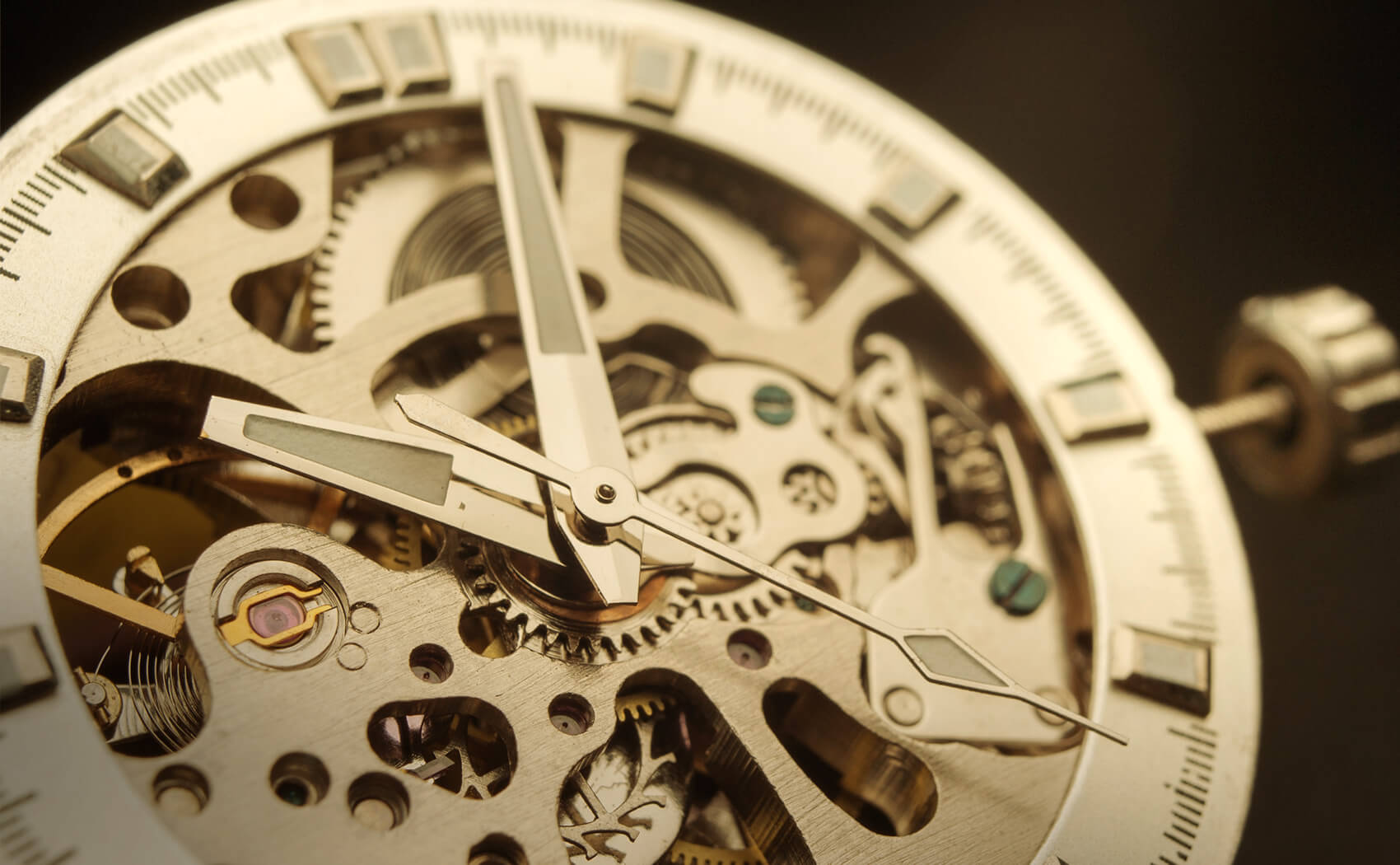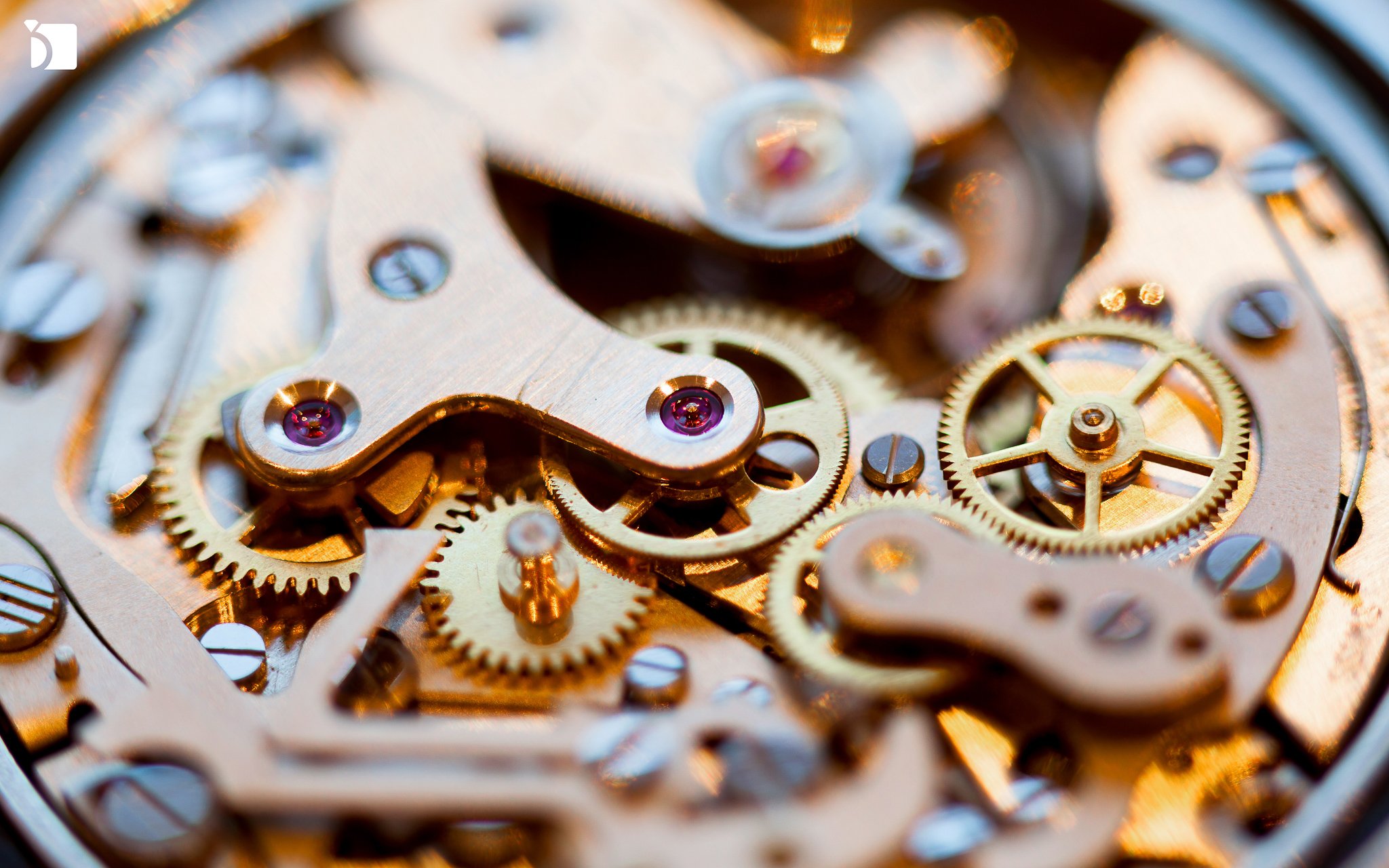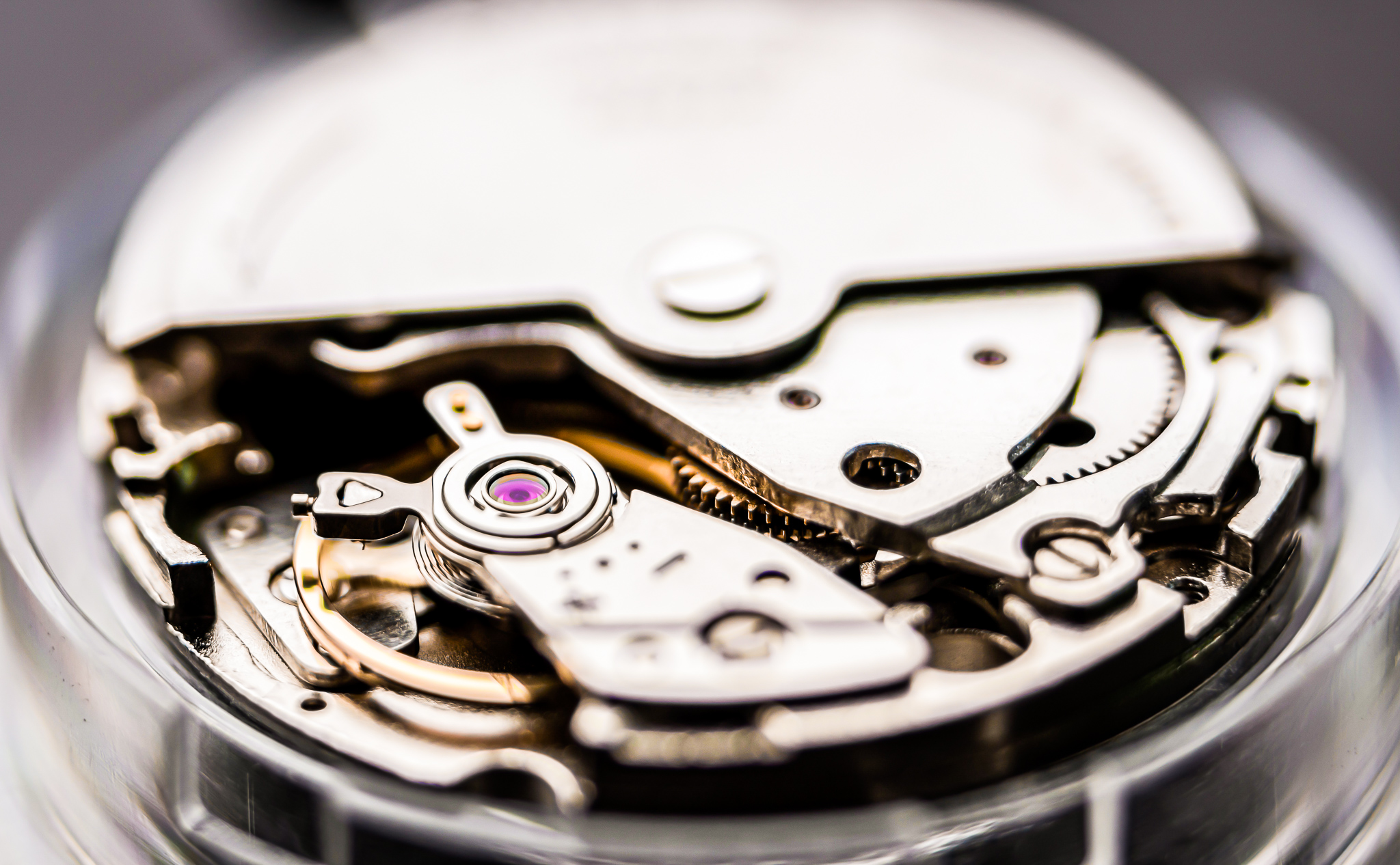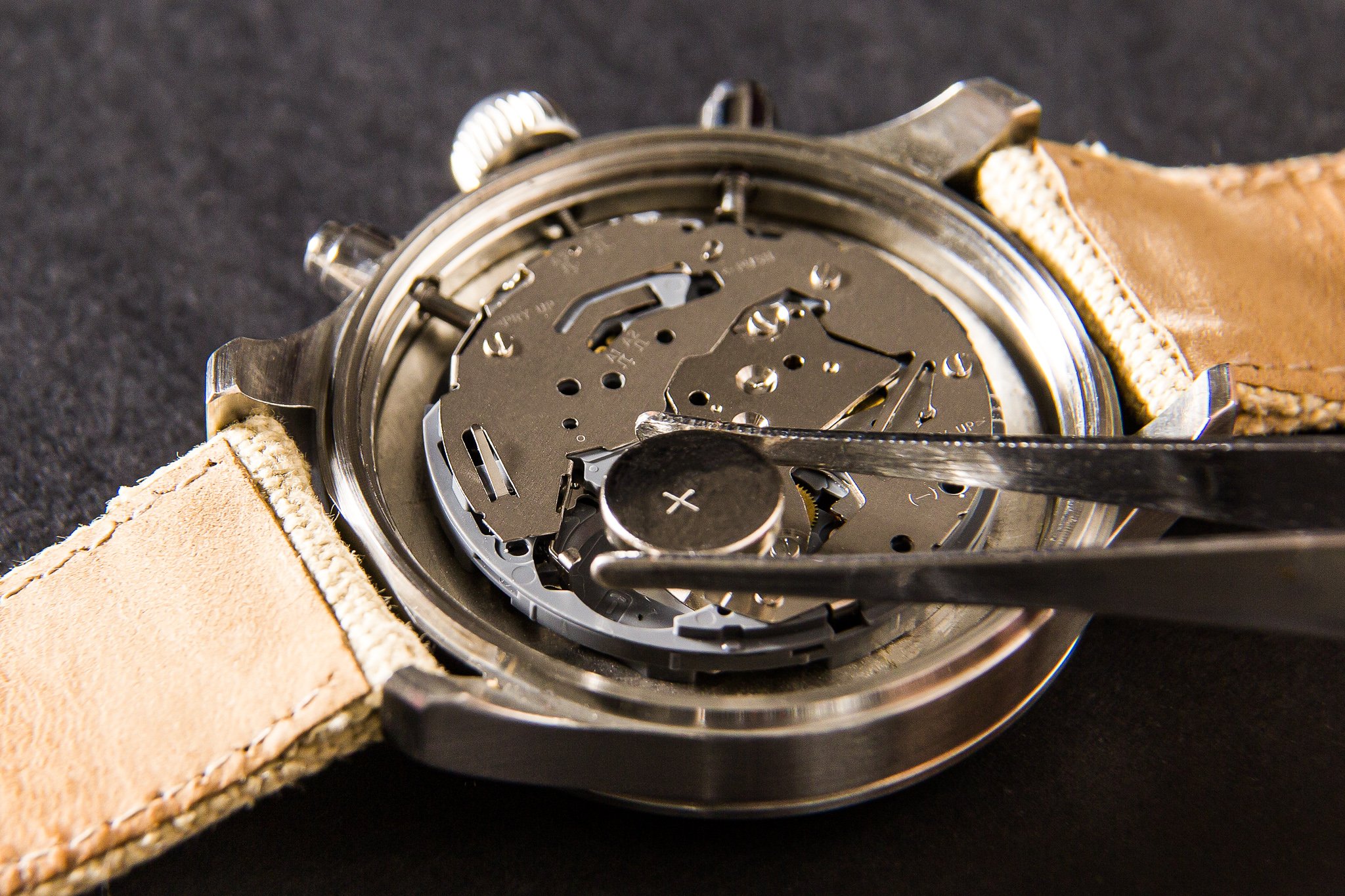A look at traditional and more recent methods of time-keeping in wristwatches
Mechanical, Quartz, Connected & More – How Watches Keep Time
Timepieces have been keeping us on time since the 15th century, and have naturally undergone many changes since their inception. From simple pocket watches of the 1600s to advanced analog timepieces of the 19th and 20th centuries to the ultra-connected minicomputers that so many wear today, watch technologies have shifted with the times, incorporating new features and functions in every era.
At the heart of each ticking watch is the system by which it powers all of its time-keeping functions: its movement.
Separated into categories such as mechanical, quartz, atomic and more, each type of movement has its own character — a specific set of mechanisms that make it run like, well, clockwork. Read on for an in-depth look at each of these unique systems.

The Types of Watch Movements
The watch movements can be broken down into 3 main categories (with subdevisions):
- Mechanical
- Manual Winding (aka Wind Up)
- Automatic (aka Kinetic/Self-Wind)
- Quartz
- Atomic
- Solar
- Connected
1. Mechanical Movements
The oldest of the movement technologies, mechanical movements get their power from a tightly coiled mainspring. As this spring unwinds, it sets off a series of tiny gears and components that temper the coil’s release in rhythmic, one-second intervals. No battery necessary.
There are two types of mechanical watches: manual movement watches and automatic movement watches. Manual movement watches require hand-winding of the mainspring. Automatic mechanical watches use a rotating metal weight called a “rotor” to channel motions of the wrist into a device within the watch that rewinds the mainspring.
Though new movement technologies have emerged over the years, they haven’t rendered mechanical movements obsolete. In fact, some of the most expensive watches on the market today utilize manual and automatic movements. The craftsmanship and precision required to create a seamless mechanical movement is hard to come by, and those who purchase such watches generally hold a deep appreciation for the skill of mechanical watchmaking. For many watch aficionados, there’s no movement more satisfying than a mechanical one.
Manual Winding (Wind Up)
Mechanical hand-wound movements are heralded classics; the oldest type of watch movement ever made. Many who wear these love the idea that they keep time the same way as their ancestors did. Often, mechanical movements are found in very expensive, antique, and collectible watches.

For information regarding repairs of manual winding watches, please visit Manual Wind Up Watch Repair Services
Automatic
Automatic watches were the hot trend in the beginning of the 20th century. Those who were on the go were delighted by the fact that they didn’t have to wind their own watch, that it wound itself while worn on the wrist. The one drawback is that if you don’t wear an automatic watch for a prolonged period of time, the watch might need manual assistance.

For information regarding repairs of manual winding watches, please visit Automatic Watch Repair Services
Brands best known for mechanical watches, automatic watches and wind up watches:
- Audemars Piguet
- Chopard
- Hublot
- Montblanc
- Patek Philippe
- Rolex
- Tag Heuer
- Vacheron Constantin
2. Quartz Movements
Quartz watches are traditionally battery-operated, and get their name from a small quartz crystal that vibrates when exposed to the battery’s electric current. This vibration is what sets the gears of the watch in motion. Newer quartz watches use solar power instead of watch batteries to power their movements.
Quartz watches are exceedingly accurate at timekeeping and are much cheaper than their mechanical counterparts.
Quartz movement batteries will typically last between 12 to 24 months. When the battery expires it should be replaced as swiftly as possible. This is because once the watch battery dies, there’s a chance that the battery can start leaking acid, which will do considerable damage to the movement.

Atomic
A subset of quartz movement watches, atomic watches are the most accurate timepieces available. They use a low-frequency radio signal to sync at least once per day with the nearest atomic clock. For U.S. watch-wearers, this clock is located in Ft. Collins, CO.
Initially, atomic watches could only display the time that appeared on your local atomic clock — meaning that if you were on the East Coast, your watch would still display Western time, and if you traveled to Europe, your watch would stop working since the U.S. clock was out of range. Newer models, however, come equipped with GPS to automatically sync to the correct time zone via satellite, or the closest atomic clock, wherever you go.
Atomic watches use quartz movements — either battery or solar-powered — to carry out their functions, but they don’t require any manual resets since they reset automatically every day. Atomic watch faces can appear in the traditional style with ticking hands, or as a digital watch with an LCD number display.
Solar
More recently, manufacturers are offering solar-powered watches, which adds convenience. These watches will never need battery change, cutting out the cost of battery replacement, which in its own way helps the environment. You don’t have to worry about proper battery disposal.
Brands best known for quartz watches:
- Seiko
- Shinola
- Timex
Brands best known for atomic watches:
- Casio
- Citizen
For information regarding repairs of manual winding watches, please visit Quartz Watch Repair Services
3. Connected Watches
In the newest evolution of watches, timekeeping is just one of many functions that you can access on your wrist. Smart watches connect to the internet (usually via a personal hotspot on your cell phone) to run apps, send texts, take photos, count steps and more. Because this watch is essentially a minicomputer, it doesn’t technically qualify as a “movement” per se, but it certainly reflects movement into the future as the newest advancement in watch technology.
Brands best known for connected watches:
- Apple Watch
- ASUS ZenWatch
- FitBit
- Pebble Time Smartwatch
- Samsung Gear
With all of the information now presented, what type of watch movement do you like?

Types of Watch Movement Repair & Servicing
For care, maintenance and/or repair of your manual, automatic, standard quartz or atomic watch, visit Watch Movement Repair Services. Our experts are trained in handling all different types of watch movements, and will work quickly and efficiently to restore your watch to fighting shape.
Check out our homepage for more information about us, or fill out our online submission form to get started.
We look forward to getting your watches up and running again, no matter the problem.
